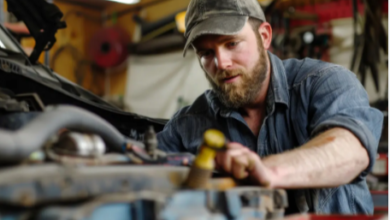Punk Rock Bands That Changed Music Forever: A Look Inside The Punk Rock Museum’s Collections

The Punk Rock Museum: A Living Tribute To Punk Rock Bands
The Punk Rock Museum in Vegas? I was skeptical at first, I’ll admit. But after hearing more about it, I’m starting to think it’s a pretty cool idea. It’s not just about dusty old guitars and ripped t-shirts; it’s supposed to be a real, breathing monument to the music that changed everything. I mean, it’s a place where you can actually feel the energy of punk rock, not just look at it behind glass.
More Than Memorabilia: The Museum’s Mission
It’s easy to think a museum is just about stuff, right? But from what I gather, this place wants to do more. It’s trying to tell the story of punk, not just show off some old Sex Pistols posters. They want to capture the DIY spirit, the anger, the energy, and the community that made punk what it is. It’s about the people, the places, and the ideas, not just the artifacts.
Why The Punk Rock Museum Matters
Okay, so why should anyone care about a Punk Rock Museum? Well, punk wasn’t just music; it was a whole way of thinking. It challenged everything, from the government to the music industry. It gave a voice to people who felt like they didn’t have one. And honestly, that’s still relevant today. A museum like this can remind us of that rebellious spirit and maybe even inspire a few people to pick up a guitar (or a protest sign).
A Skeptic’s Tour: Addressing Initial Concerns
I’m not gonna lie, when I first heard about The Punk Rock Museum, I had some doubts. How could one place possibly capture the whole punk scene? Wouldn’t it just be a bunch of famous bands and forget about the smaller, local ones? And what about the fact that Fat Mike from NOFX was involved? Would it just be a Fat Wreck Chords lovefest? I was worried it would miss the point of what punk is all about. I mean:
- Punk is about local scenes, not just big names.
- It’s about the DIY ethic, not just commercial success.
- It’s about challenging the status quo, not just selling records.
But I’m willing to give it a chance. Maybe it can surprise me. Maybe it can actually capture the spirit of punk in a way that’s authentic and meaningful. I guess I’ll have to go check it out for myself and see.
Iconic Punk Rock Bands And Their Impact
Early Innovators: Shaping The Punk Rock Sound
When you think about punk rock, certain bands just immediately pop into your head. We’re talking about the bands that weren’t just playing music; they were kicking down doors and building a whole new scene. These early innovators laid the groundwork for everything that followed.
- The Ramones: With their simple, high-energy sound, they proved you didn’t need fancy guitar solos to make a statement.
- The Sex Pistols: They brought a raw, confrontational energy that challenged the status quo.
- The Clash: They mixed punk with reggae and other influences, showing the genre’s potential for musical diversity.
These bands weren’t just about the music; they were about an attitude, a way of life. They inspired countless others to pick up instruments and start their own bands, regardless of their skill level.
The Global Reach Of Punk Rock Bands
Punk rock wasn’t just a local thing; it spread like wildfire across the globe. Different regions put their own spin on the sound, creating unique scenes and subgenres. It’s amazing how a few chords and a rebellious attitude could resonate with so many people in so many different places.
- UK Punk: Bands like The Damned and Buzzcocks added their own British flavor to the sound.
- Australian Punk: The Saints and Radio Birdman brought a raw, garage rock edge to the genre.
- Japanese Punk: Bands like The Stalin and The Blue Hearts created a vibrant and unique punk scene in Japan.
Beyond The Music: Punk Rock’s Cultural Influence
Punk rock was never just about the music; it was a whole cultural movement. It influenced fashion, art, and politics, challenging mainstream values and giving a voice to the marginalized. It’s hard to overstate the impact punk had on society.
- DIY Ethos: Punk encouraged people to do things themselves, from making their own clothes to starting their own record labels.
- Political Activism: Many punk bands used their music to speak out against injustice and inequality.
- Fashion: The ripped clothes, safety pins, and mohawks became symbols of rebellion and individuality.
The Punk Rock Museum probably has some cool exhibits on this stuff, but honestly, you can see the influence of punk everywhere you look, even today.
Exploring The Punk Rock Museum’s Collections
Rare Artifacts And Memorabilia From Punk Rock Bands
Okay, so you walk into The Punk Rock Museum, right? It’s not just posters on the wall. They’ve got some seriously cool stuff. Like, Sid Vicious’s bass guitar, or a handwritten lyric sheet from The Ramones. It’s the kind of stuff that makes you feel like you’re actually there, back in the day. They have rotating exhibits, so there’s always something new to see. I saw a flyer from a show in 1977 that cost $2 to get in. Two bucks! Can you imagine?
Fanzines And The DIY Ethos Of Punk Rock
One of the coolest things about punk is how it was all about doing it yourself. And that’s where fanzines come in. These weren’t slick, corporate magazines. They were photocopied, stapled-together expressions of pure passion. The Punk Rock Museum has a ton of them. It’s amazing to see what people were writing about, the bands they were obsessed with, and the scene they were building. It really shows you that punk wasn’t just about the music; it was a whole culture. Here’s a few things you might find in a fanzine:
- Rants about the establishment
- Interviews with local bands
- Hand-drawn illustrations
- Show reviews
Fashion And Aesthetics: The Visual Language Of Punk Rock
Punk was always about more than just the music; it was a whole visual thing too. The clothes, the hair, the makeup – it all screamed rebellion. The Punk Rock Museum has a great collection of clothes and other stuff that really shows this.
It’s not just about ripped jeans and safety pins (though there’s plenty of that). It’s about expressing yourself, not caring what anyone else thinks, and creating your own identity. It’s about taking everyday objects and turning them into something new and shocking. It’s about making a statement.
Like, they have a jacket that someone customized with patches and studs. It’s like a wearable piece of art. And it tells a story about the person who wore it, the bands they loved, and the scene they were a part of. It’s pretty awesome.
The Evolution Of Punk Rock Bands
From Underground To Mainstream: The 90s Boom
The 90s saw a significant shift for many punk rock bands, as some moved from the underground into the mainstream spotlight. This era, often marked by bands on labels like Epitaph and Fat Wreck Chords, brought a new wave of listeners to the genre. It’s interesting to think about how this commercial success changed the sound and the scene itself. Some argue it stayed true to its roots, while others feel it lost some of its edge.
Regional Scenes: Bay Area And New York Hardcore
Regional scenes have always been vital to punk rock’s identity. The Bay Area, with bands like Operation Ivy and Rancid, cultivated a distinct sound, often blending ska and punk influences. New York hardcore, on the other hand, was known for its aggressive and confrontational style, with bands like Agnostic Front and Cro-Mags leading the charge. These scenes weren’t just about the music; they were about community, shared values, and a DIY ethos. They helped launch that second wave of punk rock and hardcore. I consider the first wave to be something else entirely.
The Enduring Spirit Of Punk Rock
Despite changes in the music industry and cultural trends, the spirit of punk rock endures. It’s not just about the music; it’s about a way of thinking, a rejection of the status quo, and a commitment to doing things your own way. You can see this spirit alive and well in new bands, zines, and art collectives around the world. The Punk Rock Museum, for example, tries to capture this intangible ethos, showing that punk is more than just a historical relic; it’s an ongoing, active movement.
Punk rock’s lasting impact lies in its ability to inspire individuals to question authority, challenge norms, and create their own spaces. It’s a reminder that anyone can pick up an instrument, start a band, and make their voice heard.
Special Events And Experiences At The Punk Rock Museum
The Punk Rock Museum isn’t just about looking at old stuff; it’s about experiencing punk rock. They’ve got a bunch of cool events that really bring the history to life. It’s way more than just a museum; it’s a place to connect with the music and the culture.
Exclusive Round Table Discussions With Punk Rock Legends
Imagine sitting in a room, listening to Fat Mike, or Jack Grisham talk about the good old days. The Punk Rock Museum hosts these round table discussions where you can hear stories straight from the source. These events are super popular, and spots fill up fast.
- Hear untold stories from punk rock pioneers.
- Get insights into the creative process behind iconic albums.
- Participate in Q&A sessions with your heroes.
It’s a chance to get up close and personal with the people who shaped the music we love. You can ask questions, hear their perspectives, and really connect with the history of punk rock.
Upcoming Celebrations And Ticket Information
Keep an eye on The Punk Rock Museum’s website for upcoming events. They often have anniversary shows, special exhibits, and other celebrations. For example, on March 29, 2025, they celebrated their 2nd anniversary with T.S.O.L. Tickets usually include museum access, so you can explore the exhibits before or after the show. And hey, if you’re feeling spontaneous, you could even get hitched at a Las Vegas wedding chapel after the show!
Interactive Exhibits: Engaging With Punk Rock History
The Punk Rock Museum isn’t just about looking at static displays. They’ve got interactive exhibits that let you get hands-on with punk rock history.
- Play instruments used by famous punk bands.
- Create your own punk rock fanzine.
- Design a punk rock album cover.
These exhibits are designed to be fun and engaging, so you can really get a feel for what it was like to be a part of the punk rock scene. It’s a great way to learn about the history of punk rock and have a blast while you’re doing it.
The Philosophy Behind Preserving Punk Rock
Punk As An Ethos: Beyond The Museum Walls
It’s tricky, right? Putting something like punk rock in a museum. Punk isn’t just about old stuff; it’s a way of thinking and acting. It lives through people doing things, not just looking at things. The Punk Rock Museum faces this head-on, trying to capture the spirit, not just the artifacts. It’s about showing that punk is more than just music; it’s a mindset that can influence how you approach life, art, and community.
Active Participation: The Core Of Punk Rock
Punk rock isn’t a spectator sport. It’s about getting involved, starting your own band, making your own zine, questioning everything. The Punk Rock Museum acknowledges this by trying to be more than just a display case. It aims to inspire people to create, to challenge, and to participate in their own communities. It’s about keeping the DIY spirit alive, showing that anyone can pick up an instrument or a pen and make something happen. It’s a reminder that punk is about action, not just observation.
Challenging Perceptions: What It Means To Be Punk
What does it even mean to be punk? Everyone has their own idea, and that’s kind of the point. The Punk Rock Museum doesn’t try to give one definitive answer. Instead, it presents a range of perspectives, showcasing the diversity within the punk scene. It challenges the idea that there’s only one “right” way to be punk, highlighting the different sounds, styles, and beliefs that fall under the punk umbrella. It’s about questioning norms, embracing individuality, and finding your own voice within the chaos.
Punk rock is more than just a genre; it’s a challenge to the status quo. It’s about questioning authority, embracing individuality, and creating your own community. It’s a reminder that anyone can make a difference, regardless of their background or skill level.
Here are some key aspects of the punk ethos:
- DIY (Do It Yourself) attitude
- Questioning authority
- Community building
- Individuality and self-expression
Frequently Asked Questions
Where is The Punk Rock Museum located?
The Punk Rock Museum is in Las Vegas, Nevada. It’s a special place that celebrates the history and culture of punk rock music.
What kind of stuff can I see at the museum?
The museum has lots of cool things like old clothes from bands, rare records, posters, and even instruments. You can see how punk fashion changed over time and learn about the bands that started it all.
Does the museum host special events or concerts?
Yes! The museum often has special events. These can be talks with famous punk musicians, concerts, or other fun activities. Check their website to see what’s coming up.
How can I get tickets to visit the museum?
You can buy tickets on the museum’s official website or at the door. It’s a good idea to buy them online ahead of time, especially for popular events.
Who should visit The Punk Rock Museum?
The museum is for everyone, whether you’ve loved punk rock for a long time or are just learning about it. It shows how punk music and its ideas have influenced the world.
What is the main idea behind preserving punk rock history?
Punk rock is more than just music; it’s a way of thinking that’s about being yourself and not following the crowd. The museum helps keep this spirit alive by showing its history and how it still matters today.




